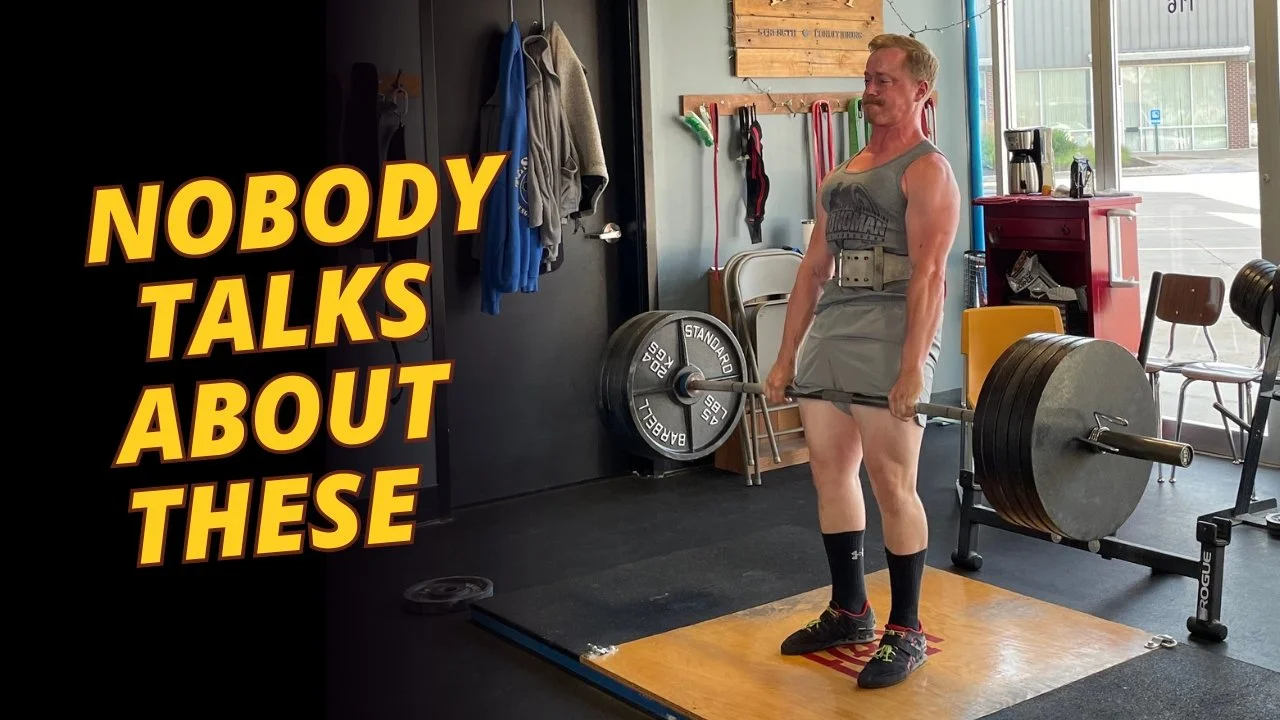Tips and Tricks for the New Lifter
/When you’re new to some task, like lifting, there are always a few tips and tricks that will seem rather obvious to you years later, so in an effort to speed things up a bit, here are several that might prove useful to both new and experienced lifters:
figure 1: An additional use for your wrist wraps
Deadlifting on a Non-level Floor
If you must deadlift on a slightly non-level floor (hopefully very slightly!), and you find that the barbell always wants to roll a bit, you can simply place your wrist wraps on the floor in front of the plates (Figure 1).
You can, of course, use any other soft, thin items like socks, lifting straps, even sponges, but don’t use a hard item like a 2.5-lb plate. If you set the bar down, and it glances off that item, it will come back at your shins, and shins and horizontally moving barbells don’t get along well (hint: the barbell always wins). In addition, the contact between the plate(s) on the bar and the 2.5-lb plate on the floor may cause one or both of them to chip. Wrist wraps are thick enough to immobilize the bar but soft and compressible enough that setting the bar down on top of the wrist wraps won’t cause any problems.
Quit Using 2.5-lb Plates . . . Sometimes
Stop using 2.5-lb plates in your warm-ups. As you get stronger, you’ll find that you can round most - if not all - of your warm-up weights to numbers that end in “5.” This will allow you to stop using 2.5-lb plates in your warm-ups.
If you’d like to use 2.5-lb plates in your final warm-up in an effort to be a bit more precise, that’s fine, but most of your warm-up weight selections won’t require this level of precision. (If your work sets on a given lift are less than 100 lbs, you might decide to use 2.5-lb plates more often in your warm-ups, but you can apply a similar exclusionary logic to the 1.25-lb plates instead.)
Stop Resting . . . Sort-of
Stop resting between your warm-ups sets. We mention this on a regular basis, but it still blows people’s minds that they don’t need to rest 5 minutes between every single set.
Do your empty bar sets (alright, you can rest 15 seconds between your two empty bar sets of five reps), then add weight and go. Then add weight and go again. Repeat until it’s time for your first work set, before which you should probably rest a few minutes. Remember - the act of changing the weight on the bar gives you enough rest to do the next warm-up set. This will save you a lot of time in the gym.
Write Out Your Next Workout
Write out your next workout before leaving the gym. As you gain experience, you may ditch this habit, and that’s perfectly fine, but when you’re new, it’s a very productive use of your rest periods to start writing out your next workout in your training journal - especially the warm-ups. You’re already in “training mode,” and the warm-ups you performed today will inform and influence the warm-ups you do next time, so now is as good a time as any to write out your next training session (and you won’t have to think too hard when you come in the gym next time).
As always, we hope these tips and tricks help you get stronger and live better.
-Phil
PS: Whenever you want even more Testify in your life, here are some free resources:
Book a free intro and strategy session with us HERE.
Pick up a free copy of Testify’s Squat Guide: 12 Tips to Improve Your Squat Now HERE.
Get our free weekly email - containing useful videos, articles, and training tips - HERE.
Follow Testify on Instagram HERE.
Subscribe to Testify’s YouTube channel HERE.
(Some links may be affiliate links. As an Amazon Associate, Testify earns from qualifying purchases.)

